USB devices are as prevalent on the boat as at home – guests bring devices that require it, I have a ton that need it, and not just your cell phone or tablet. There’s an Amazon Echo which handles all of our music, a Garmin inReach to keep us safe, and a Raspberry Pi that runs navigation software and SignalK just to name a few. Finding power for all of these devices is easy if you’re plugged in at the dock, if not a bit inefficient with wall warts and adapters. I decided to make this more elegant, and it was a simple project to do with three different and inexpensive products.
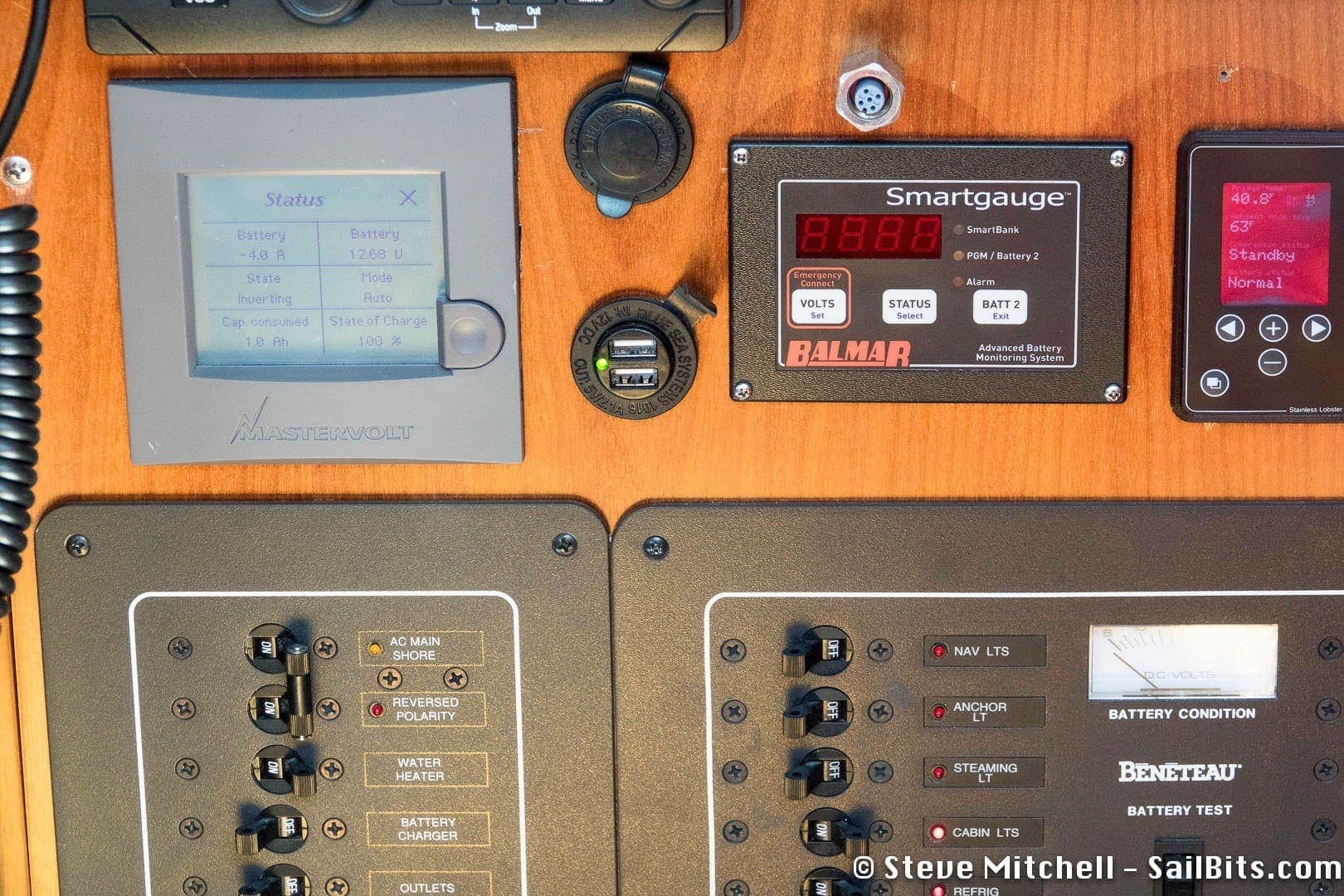
Blue Sea USB outlet at Nav station
The first part of the project was providing more streamlined USB access for people charging their phone and other communications devices. This took the form of the BlueSea USB dual charger socket. I’ve had these in place for a year – one at the Navigation station, and one at the helm. Now the two most frequented areas had always available USB power, available directly from the DC battery bank, no inverter or dock power required.
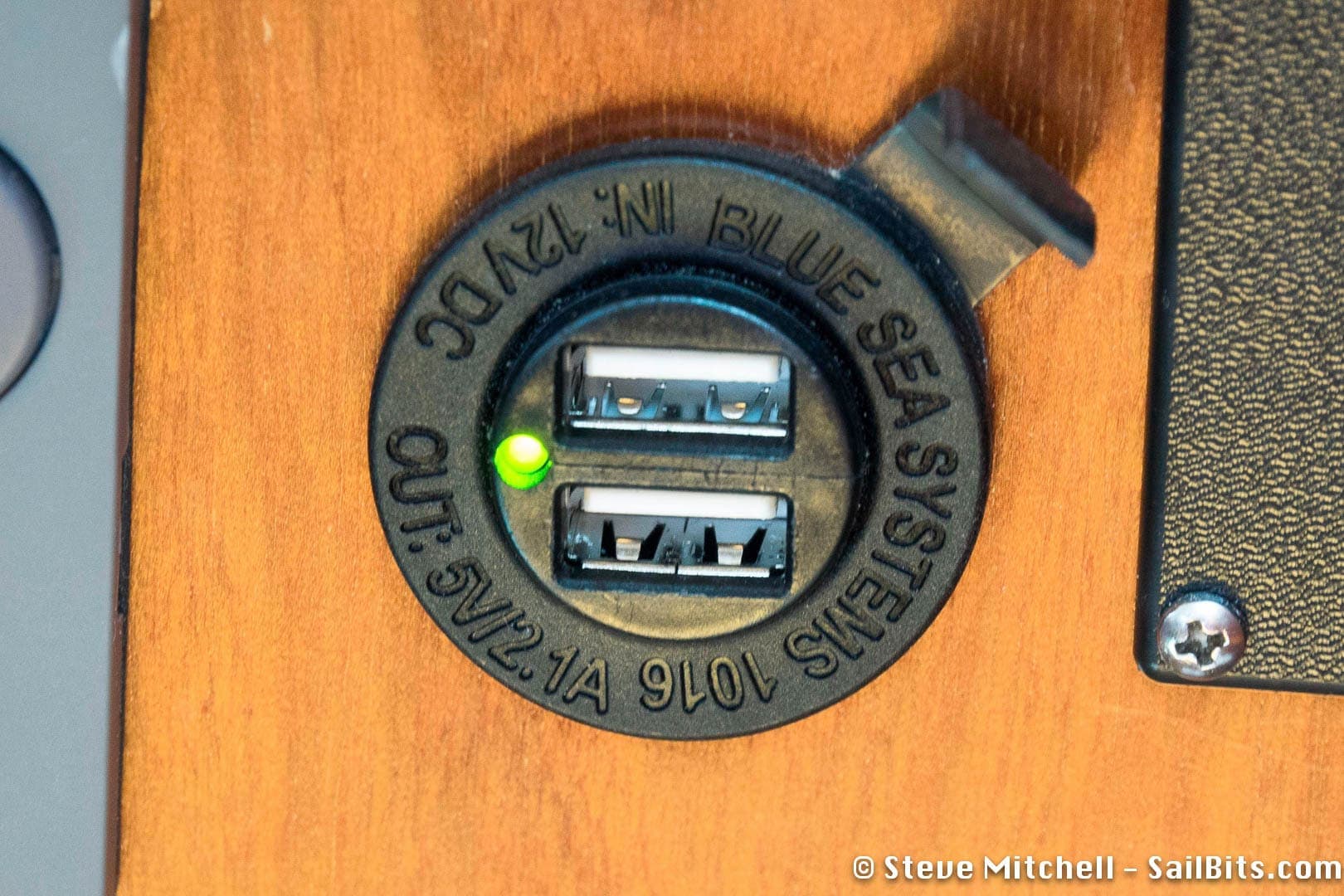
They are super easy to install, and have a total charging capacity of 2.1 amps. There are no converters or other pieces required – simply a connection to your 12v or 24v battery bank, and you have 5v DC USB power.
I have noticed when you plug in two high amperage devices, that one will be slowed down charging-wise given that the total output is only 2.1 amps. I recommend not charging two fast charge or high capacity items like iPads and such at the same time on the device.
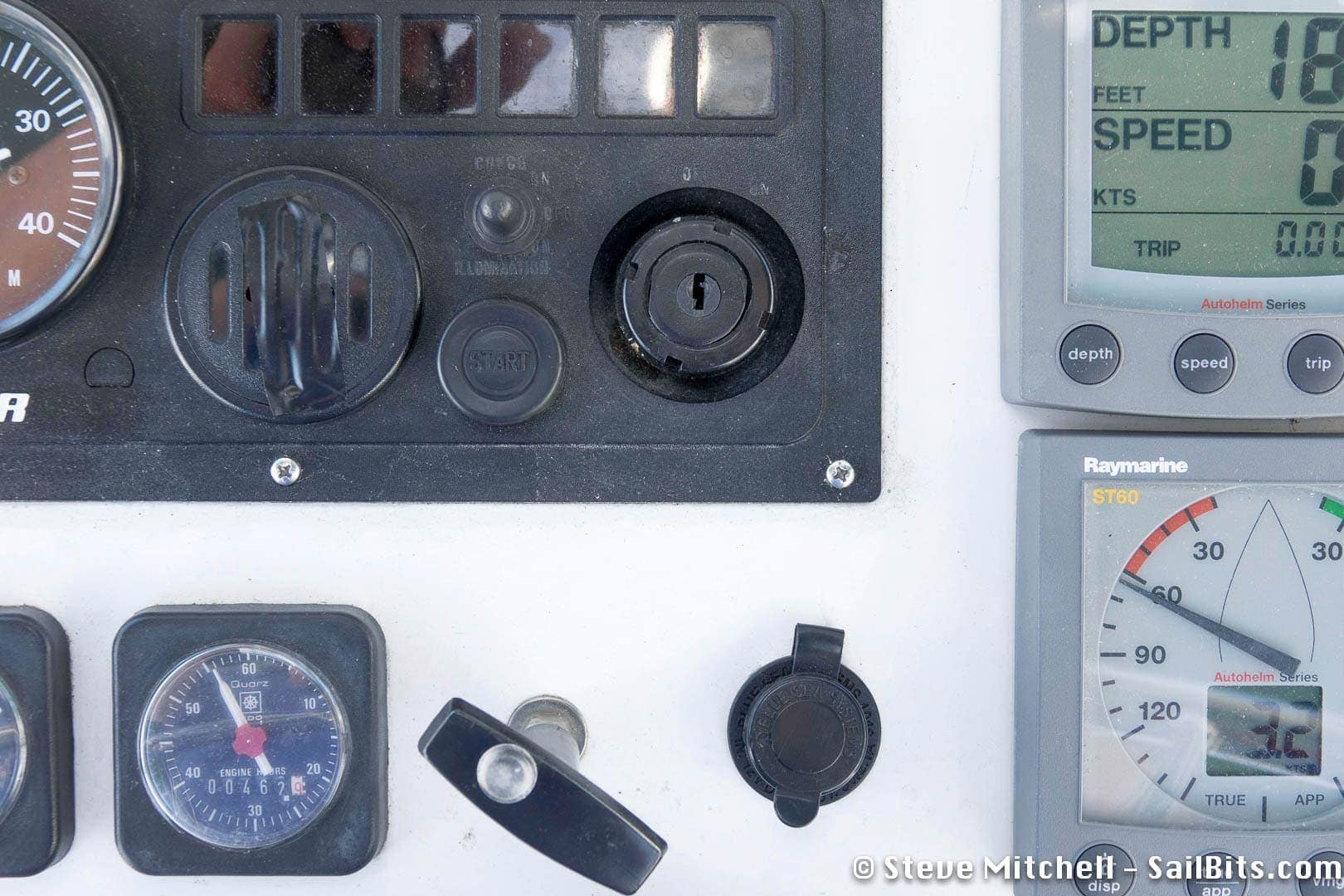
BlueSea USB at the helm
I like having it at the helm so I can charge my Garmin inReach while it is broadcasting our location – having a fully topped off battery for it is great in the event of a catastrophe.
Sometimes folks who are enjoying the sail in the cockpit use this port to charge their phones. I appreciate the convenience, but I have had my share of getting caught up in their cables while trying to adjust sheets, and I am always worried about an open transom sailboat cockpit and phones sliding into the abyss.
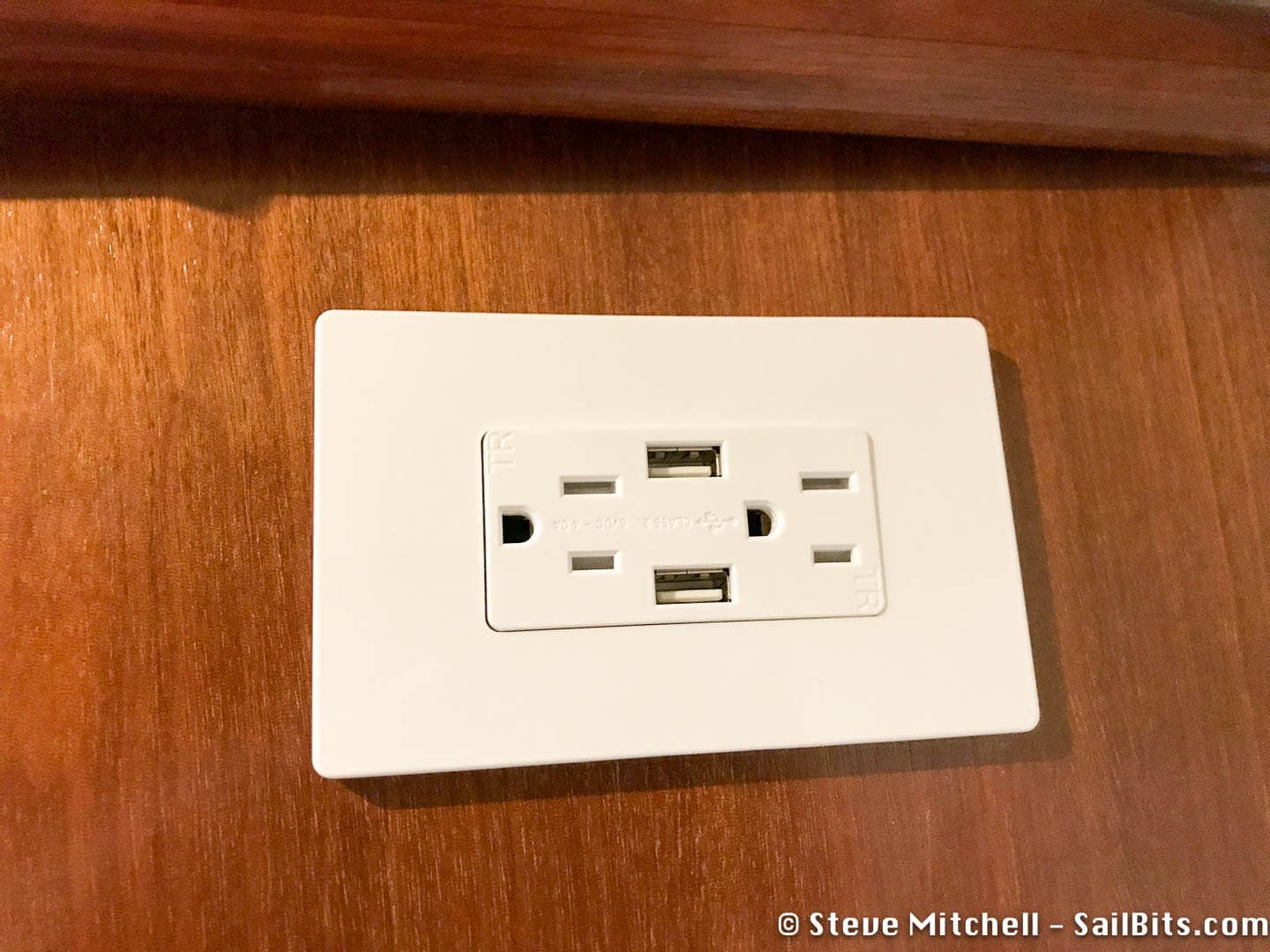
Topgreener AC outlets + USB
The second part was solving USB power for overnight stays. This took the form of an AC/DC outlet combo in each stateroom that had high speed chargers built in, and allowed people to plug their USB cable, without wall wart, and regardless of dock power, into the outlet and charge while staying overnight. This does require that the inverter is on and functioning.
After a bunch of research, I chose the Topgreener TU2154A Smart Ultra High Speed USB Charger Outlet 15 Amp Receptacle. Both USB ports support fast charge at 2 amps and seem to live up to that claim. I’ve charged an iPad and iPhone 7 Plus simultaneously and they charge just as fast as using the Apple power bricks. Android phones seem to charge quickly too, although there are some that require proprietary charging cables/bricks that may not charge as fast.
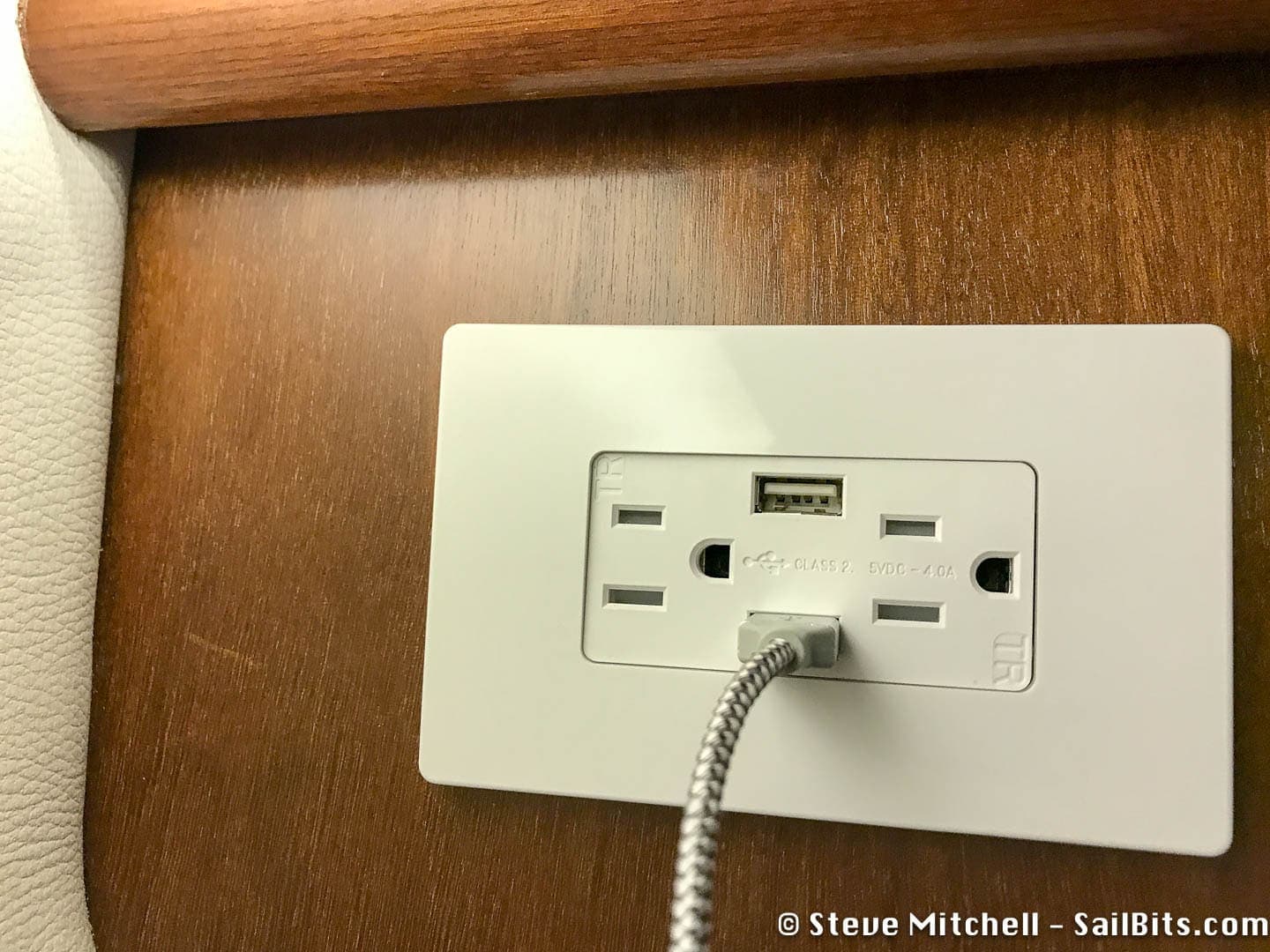
Charging in the stateroom
I like these outlets because other things are plugged in to the AC side while out and about, like an ice machine and TV. This means those devices can stay plugged in and people can still charge their devices. Having USB available via inverter is also nice at the end of the day when folks are going to bed – no looking for your wall wart to charge your phone overnight.
The final part is for what I call the Computer Alcove, which contains the Amazon Echo, Raspberry Pi, iKommunicate, SmartThings hub, MasterBus USB interface, Yacht Devices Voyage Recorder, and USB-powered Ethernet switch. I had been running these via various means – some using a DROK 12v-5v buck converter and a lot of cabling and crimping. This wasn’t the cleanest solution, as a single power supply would be better, but I didn’t really find any that I liked.
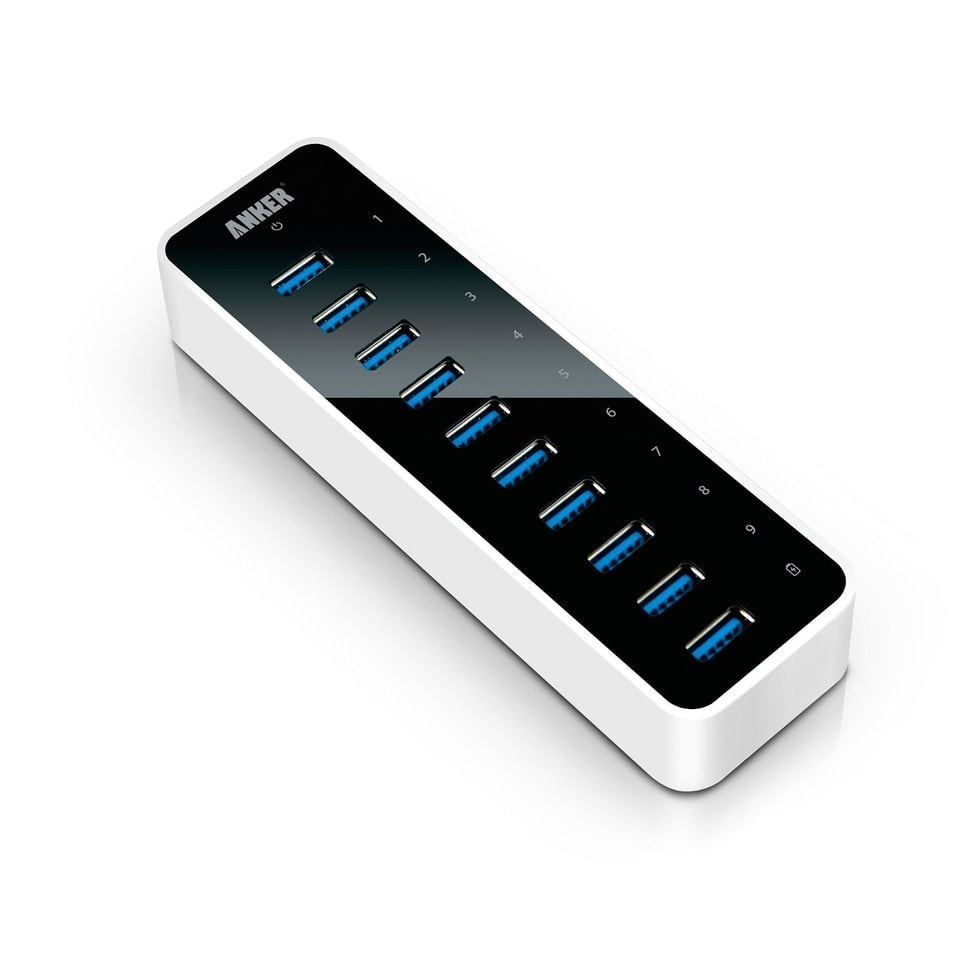
Anker 10 port USB hub
I use an Anker 10 port USB powered hub at home and work that has been rock solid. I noticed that it has a 12V power supply, and after a bit of research, decided to wire one in directly off the battery bank to see how it does.
After figuring out the polarity on the included cabling, modifying it to connect to a spare fused spot on my 12v system, I had the hub up and running powering the Echo, Pi, and Ethernet switch without any problems. And I have more ports for expansion if I decide to add something else (which I am sure I will). So far in my testing I haven’t seen any problems – I tried while the battery bank was under charge (14v), normal (12v), and starting the engine and other things. We’ll see the long term viability of something like this, but even if it dies in a year or so, I can swap it for whatever the new technology is for pretty cheap.
These three solutions seem to provide more than enough power and flexibility for all of the USB devices that I have on board, and are very inexpensive and easy to add. My devices are all charged, visitors have an easier way to do the same, and it takes less space and cabling.

